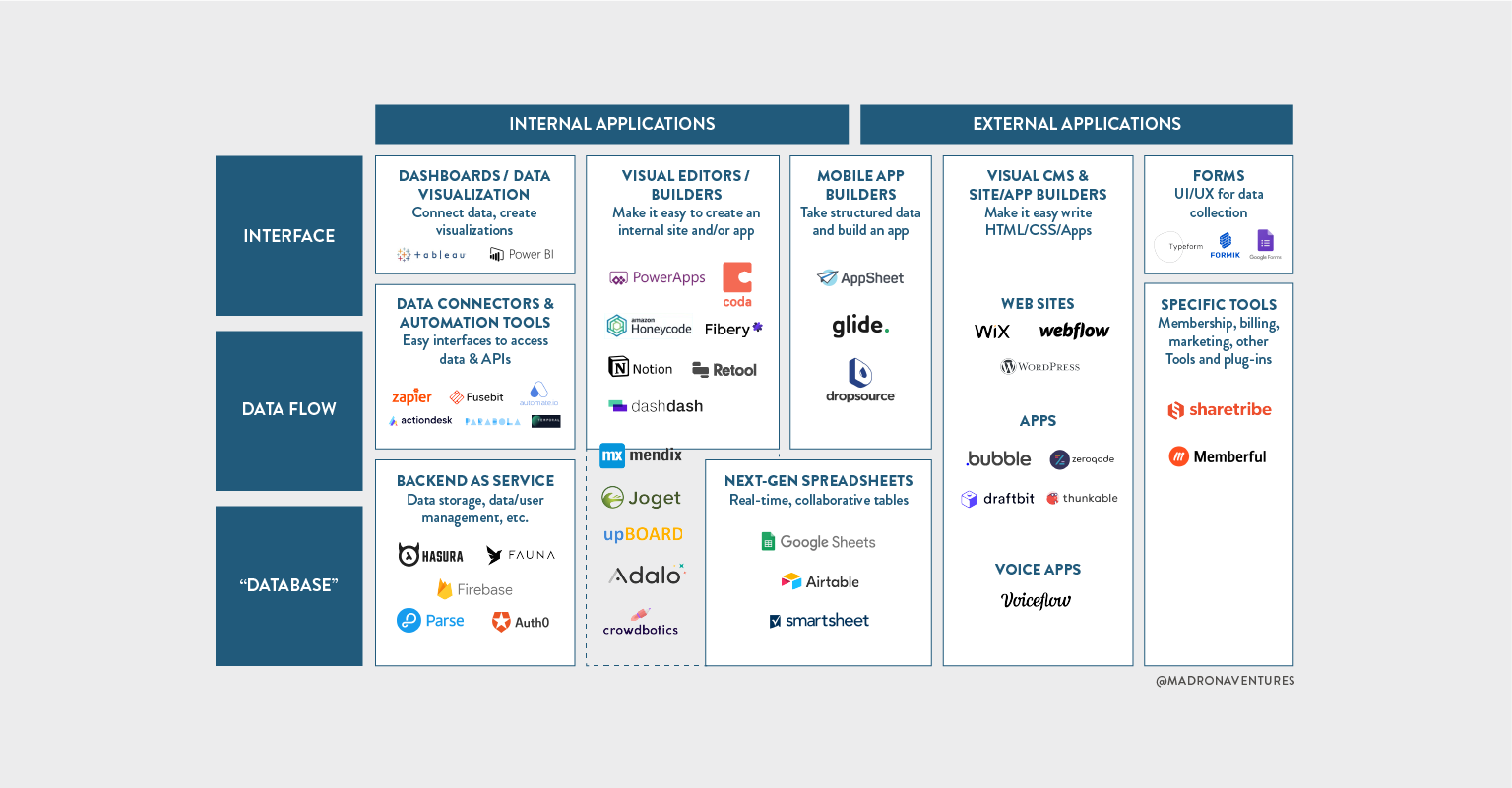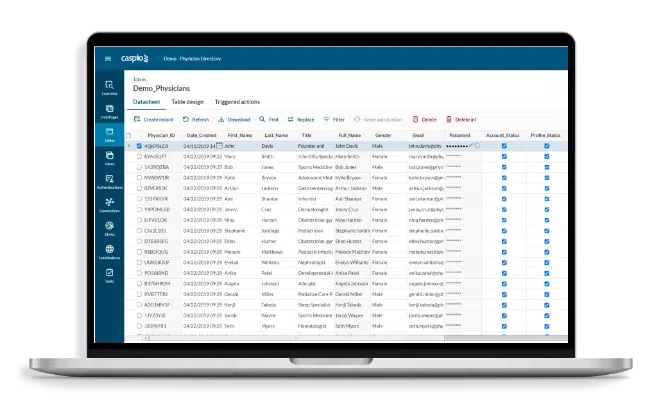Opening the Prospective of Scalable Data Sources: No Coding Required for Seamless Data Integration and Administration
The emergence of no-code remedies is changing how companies approach scalable data sources, allowing seamless data combination and monitoring without the demand for extensive coding skills. As organizations seek to harness the power of their data, the key attributes and prominent devices that facilitate this change warrant closer exam.
Recognizing Scalable Databases
Exactly how do scalable data sources fit the growing demands of modern applications? Scalable databases are developed to deal with raising quantities of data and user requests without giving up performance.
Along with scaling methods, scalable databases commonly integrate innovative building attributes, such as sharding and replication. Sharding splits information right into smaller, manageable items, enabling parallel processing and reducing reaction times. Duplication makes sure data accessibility and sturdiness by developing duplicates of information across multiple nodes, protecting against prospective data loss.
In addition, modern scalable data sources leverage cloud computing modern technologies, allowing dynamic resource appropriation based upon need. This versatility allows companies to react quickly to rising and fall work, guaranteeing optimum efficiency and customer experience. As businesses significantly depend on data-driven decision-making, comprehending scalable databases comes to be vital for using their capacity in supporting modern-day applications.
Advantages of No-Code Solutions
As organizations progressively embrace scalable databases to handle their expanding information requirements, the need for easy to use growth tools has actually likewise surged. No-code solutions are becoming an essential element in this landscape, using numerous key advantages that enhance functional performance and access.

Secondly, these options substantially increase the development procedure. By removing the demand for coding, organizations can quickly model applications, iterate on styles, and deploy services in a portion of the moment required by typical techniques. This agility allows organizations to respond swiftly to market needs and altering problems.
Furthermore, no-code systems usually come outfitted with pre-built themes and integration capacities, simplifying the connection with existing systems. This minimizes the intricacy generally related to data combination, eventually reducing the complete expense of ownership. Therefore, organizations can concentrate on leveraging data understandings instead than obtaining slowed down in technical details, maximizing their tactical potential.
Secret Functions for Data Combination
Efficient information combination is necessary for organizations looking for to harness the complete possibility of their scalable data sources. Secret attributes that help with smooth information assimilation consist of robust information adapters, automated data mapping, and real-time data synchronization.
Robust data adapters allow companies to connect various information sources, whether they live on-premises or in the cloud, guaranteeing comprehensive accessibility to varied datasets - no-code. Automated information mapping streamlines the process of aligning inconsonant data styles and frameworks, enabling for quicker and more exact integration processes. This feature reduces the need for hand-operated intervention, lowering the potential for errors
Real-time information synchronization is an additional crucial function that makes certain data uniformity across systems. By updating information in real-time, organizations can keep a updated and accurate view of their info landscape, which is see post vital for timely decision-making. In addition, aesthetic analytics and straightforward dashboards improve the visibility of integrated information, permitting stakeholders to obtain workable understandings effortlessly.
Finally, data administration capabilities guarantee conformity with policies and inner policies, protecting sensitive information while promoting a society of data stability. Collectively, these attributes empower organizations to attain efficient and efficient information integration.
Popular No-Code Tools Available
Organizations progressively depend on no-code devices to enhance their information combination procedures and streamline operations. These systems eliminate the demand for considerable shows knowledge, making it possible for individuals to develop applications and handle data with instinctive visual user interfaces. Among one of the most prominent no-code tools are Airtable, Zoho Designer, and Bubble, each offering distinct features tailored for different service demands.
Airtable combines the simpleness of spreadsheets with the capability of data sources, permitting customers to organize and team up on data successfully. Zoho Creator provides a substantial collection of customizable applications, allowing customers to integrate and automate workflows with other Zoho items perfectly. Bubble stands out for its ability to create sophisticated web applications without coding, providing to business and startups alike.
In addition, devices like Zapier and Integromat assist in automated operations by integrating numerous applications, allowing users to connect information sources effortlessly. These no-code solutions not only save time but additionally equip groups to focus on critical initiatives instead of technical difficulties. As companies proceed to welcome electronic transformation, the fostering of find this no-code devices is established to transform the way data combination and monitoring are come close to, driving effectiveness and development.
Real-World Usage Cases
Various industries have efficiently implemented no-code devices to address particular challenges and boost functional performance. In the healthcare market, as an example, providers make use of no-code systems to streamline person document monitoring and visit organizing. By integrating various information sources without extensive coding, health care experts can focus much more on individual treatment as opposed to management tasks.
In retail, organizations leverage no-code databases to manage supply and sales data in genuine time. no-code. This permits for quick decision-making pertaining to supply levels and promotional techniques, ultimately improving client complete satisfaction and sales performance
Moreover, banks have embraced no-code remedies to automate conformity reporting and data evaluation, minimizing manual errors and increasing response times to governing adjustments.

These real-world use cases show the flexibility and efficacy of no-code devices in various markets, proving that scalable data sources can drive innovation and operational effectiveness without the demand for substantial shows understanding.
Conclusion
To conclude, the assimilation of no-code options right into scalable database management represents a substantial development in data handling capabilities. By facilitating smooth connections in between diverse information sources and automating process, these devices empower organizations to successfully handle growing data quantities without the need for technical knowledge. The resultant improvement in functional efficiency and data-driven decision-making emphasizes the transformative possibility of these ingenious methods within various markets, inevitably sustaining tactical purposes and promoting business development.
Duplication makes sure information schedule and durability by developing copies of information throughout several nodes, safeguarding against see here potential information loss. - no-code
Robust data connectors allow organizations to link numerous information sources, whether they stay on-premises or in the cloud, making sure detailed accessibility to diverse datasets. Automated information mapping streamlines the procedure of lining up disparate information layouts and structures, allowing for quicker and a lot more precise assimilation procedures.Real-time information synchronization is another important feature that guarantees data uniformity throughout platforms. By assisting in smooth connections in between diverse data resources and automating operations, these tools equip companies to efficiently manage growing data quantities without the requirement for technological know-how.